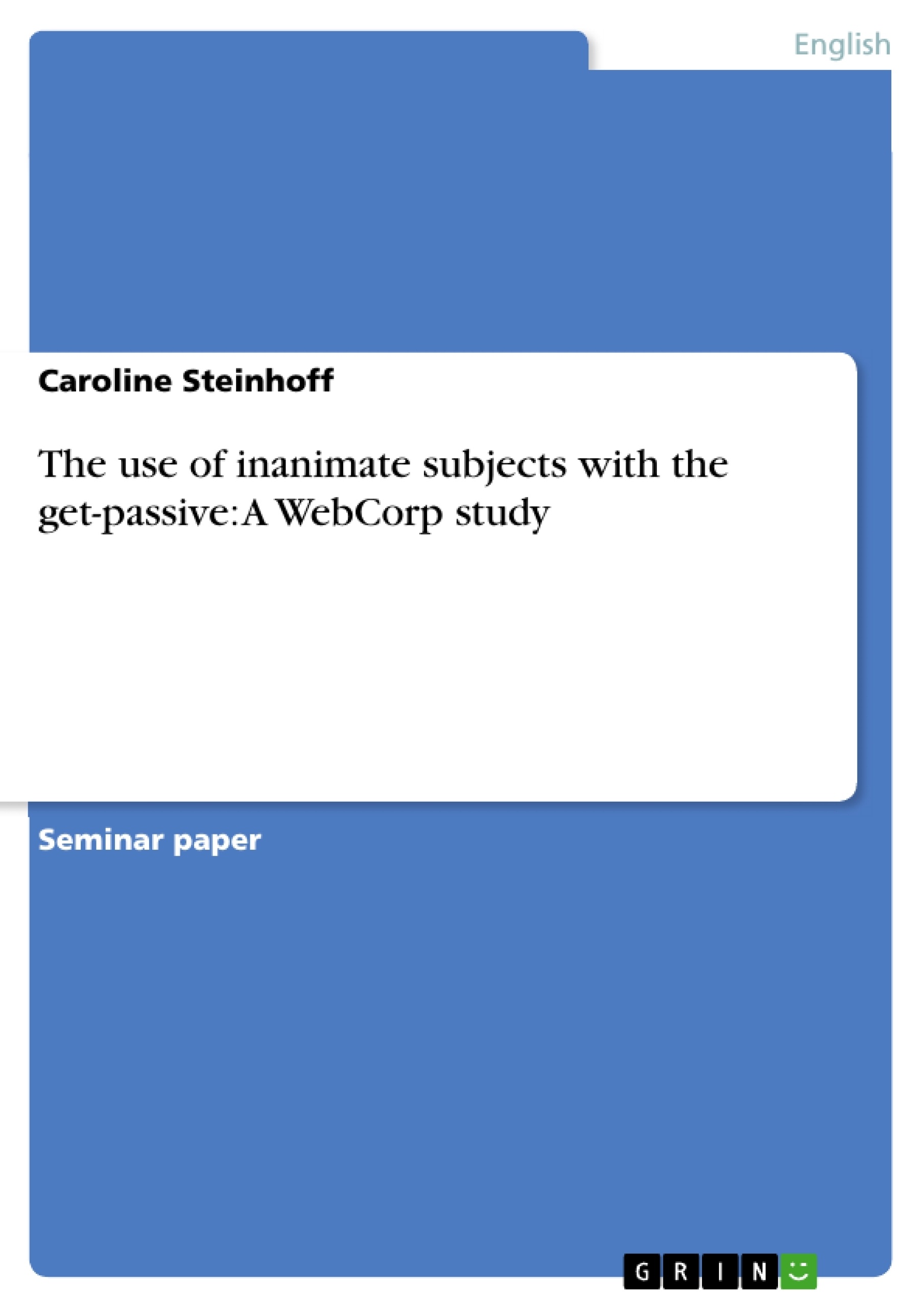This paper is concerned with the use of the internet in linguistic research. The phenomenon under investigation is the get-passive. In a first step, I will outline reasons for and problems with using the web as a linguistic corpus. After this, I will explain the linguistic phenomenon “get-passive”, taking into account the debate on the term itself, typical characteristics of the get-passive and its diachronic development. The next step will be the description and analysis of the WebCorp study on get-passives as opposed to be-passives. In this way, I hope to be able to show whether the constraints traditionally attributed to get-passives, in particular animacy of the subject, are still in force, or in how far they are lessening, possibly making the get-passive an equivalent contestant to the be-passive. Differences between British and American English will be examined in order to find out whether either variant is more advanced.
Inhaltsverzeichnis (Table of Contents)
- Introduction.
- Using the World Wide Web as a linguistic corpus..
- The linguistic phenomenon under investigation: the get-passive
- Is the get-passive a true passive?.
- Typical characteristics of get-passives.
- The diachronic development of get-passives....
- WebCorp Study on the get-passive as opposed to the be-passive.
- Research questions
- Methodology
- Reasons for choosing WebCorp ..
- The participles under investigation
- WebCorp adjustments for the present study..
- Treatment of the WebCorp output..
- Analysis and results..
- Collocations with shot
- Collocations with rejected.
- Collocations with asked.
- Conclusion...
Zielsetzung und Themenschwerpunkte (Objectives and Key Themes)
This paper investigates the use of the internet as a resource for linguistic research, specifically focusing on the get-passive. The paper explores the reasons for and challenges of utilizing the web as a linguistic corpus, provides a comprehensive analysis of the get-passive, and examines the limitations of traditional constraints, such as the animacy of the subject, in light of contemporary usage.
- The viability of using the World Wide Web as a linguistic corpus.
- A detailed examination of the get-passive and its linguistic features.
- The validity of traditional assumptions regarding the use of get-passives.
- Exploring the differences in get-passive usage between British and American English.
- Analyzing the potential for the get-passive to become an equivalent alternative to the be-passive.
Zusammenfassung der Kapitel (Chapter Summaries)
The introductory chapter outlines the research objectives, introduces the get-passive as the phenomenon under investigation, and discusses the strengths and weaknesses of using the web as a linguistic corpus. The second chapter dives deeper into the linguistic analysis of the get-passive, addressing its passive status, common characteristics, and diachronic development. This chapter also lays the groundwork for the WebCorp study, which is presented in the fourth chapter.
Schlüsselwörter (Keywords)
The central focus of this paper is on the get-passive and its usage in contemporary English. The paper utilizes the WebCorp corpus, a web-based tool for linguistic research, to analyze the occurrence and features of the get-passive. This exploration includes investigating the limitations of traditional assumptions surrounding the get-passive, including its perceived animacy constraints and its formal vs. informal usage.
- Quote paper
- Caroline Steinhoff (Author), 2008, The use of inanimate subjects with the get-passive: A WebCorp study, Munich, GRIN Verlag, https://www.grin.com/document/92647



